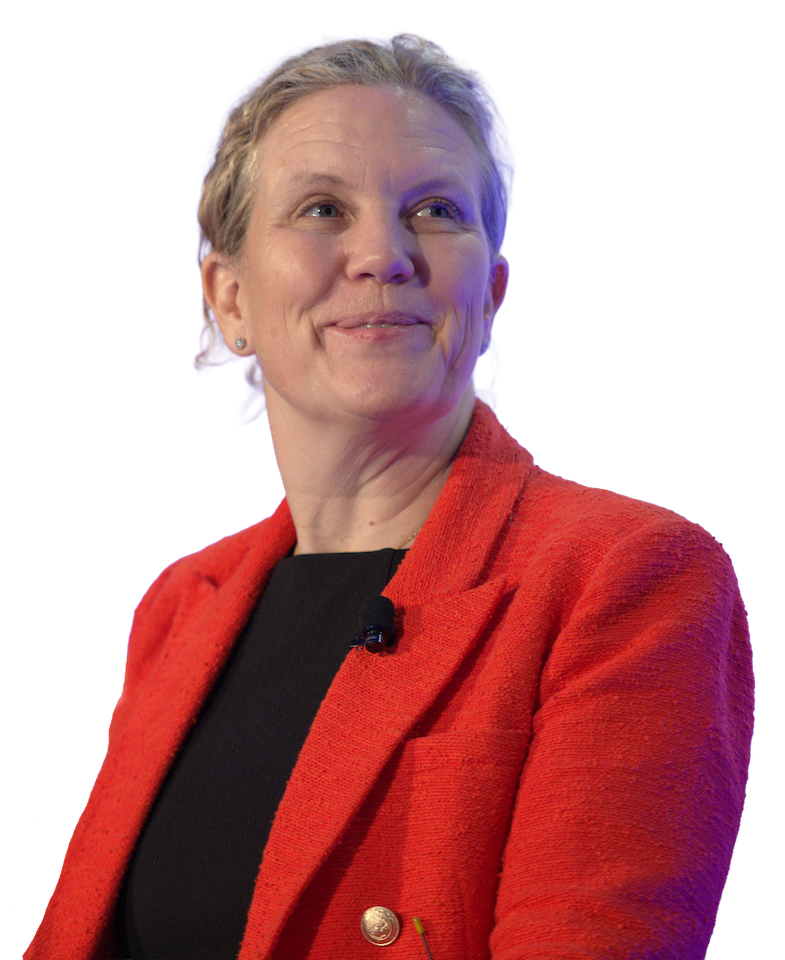
This article is part of our 2024-25 Annual Report.

Melanoma care has experienced remarkable changes in recent years, propelled by teamwork across specialties, breakthrough science, and a dedication to advancing patient outcomes. The old, predictable order of treatment — where patients would first see a surgeon, and only later a medical oncologist for systemic therapy — has become a flexible, patient-centered model shaped by the coordinated expertise of dermatologists, surgeons, medical oncologists, and radiation specialists.
“More than ever, a patient’s journey is multidisciplinary,” says Dr. Charles Kaufman, Associate Professor at Washington University School of Medicine, Division of Oncology. “When it’s working right, we all communicate — dermatology, surgery, medical oncology, radiation oncology — to make a plan.” This collaborative mindset ensures that each patient’s treatment plan is tailored, informed by broad expertise, and capable of adapting to changes in the field.
Dr. Charlotte Ariyan, Physician-Scientist and Co-leader of the Melanoma Disease Management Team at Memorial Sloan Kettering Cancer Center says that today, neoadjuvant therapies — treatments given before surgery — are playing an increasingly important role. “Now patients often start with medical oncology for systemic therapies and then have surgery, instead of the other way around,” she adds. “These approaches can shrink tumors, allow for less extensive surgical procedures, and may improve patient outcomes.”

“More than ever, a patient’s journey is multidisciplinary.”
For patients, the treatment journey often begins in the dermatologist’s office with a suspicious mole. But what unfolds next is a testament to how far melanoma care has come. Patients benefit not only from better therapies, but also from more open communication and shared decision-making between providers.
Teams now integrate new findings rapidly, adapting strategies as research emerges. Medical oncologists and surgeons meet regularly to discuss patient cases, ensuring timing and treatment selections are truly individualized. This shift to a more dynamic and team-based approach also means that dermatologists remain involved long after diagnosis, monitoring and supporting patients through the entire treatment process, often helping manage side effects of new therapies. The role of dermatologists as ongoing caregivers highlights how important it is to address the full spectrum of patient needs, including monitoring for potential recurrence or new melanomas.

“These multi-institution projects allow clinicians and researchers to ask new questions and work towards answers that might be out of reach in traditional, single-institution studies.”
This collaborative spirit is especially vital as complex cases are becoming more common. Neoadjuvant therapies, less invasive surgical techniques, and new immunotherapies have shifted many of the conversations and decisions to the team setting. “With melanoma, the knowledge and experience of all disciplines is important to getting the best outcome for the patient,” notes Dr. Kaufman.
Researchers like Dr. Ariyan and Dr. Kaufman are central to this revolution in care. Their work, fueled by MRA, shapes not only the standard of practice but also the direction of future research.
Dr. Ariyan’s projects focus on unique and challenging aspects of melanoma treatment — including rare subtypes such as acral melanoma (skin cancer that develops on non-sun-exposed areas of the body such as the palms, soles, and under the nails) or unusual patterns of recurrence. Dr. Ariyan explains that research on acral melanoma is important because it is an understudied form of melanoma, and not as responsive to our current therapies, despite having some of the same tumor genomics as cutaneous melanoma. With MRA support, she has helped establish consortia that collect and study rare melanoma patient samples from across the country. “These multi-institution projects allow clinicians and researchers to ask new questions and work towards answers that might be out of reach in traditional, single-institution studies,” she says.
For example, Dr. Ariyan and colleagues at Duke University are studying in-transit melanoma — a form of recurrence that occurs in about 5-10% of patients with primary cutaneous melanoma where the cancer spreads through lymphatic vessels from the primary tumor to nodules on the skin or in the soft tissue, but before it reaches the nearest lymph node basin. This pattern of metastasis was historically difficult to study due to its rarity but now, with MRA’s help, they have built one of the largest clinical datasets of in-transit melanoma patients, providing a foundation for new insights and potential therapies. “This gives us a powerful clinical set, with matched tissue to answer questions for us, and for the greater melanoma community,” says Dr. Ariyan. She adds the team hopes to use that to look at patients who are resistant to current therapies, whether after immune therapy or targeted therapy, and what’s going on so they can find a way to reverse that resistance as well.
“The MRA has the capacity to fund practice-changing ideas ... to rapidly pivot to what’s important and what the next questions are.”
Meanwhile, Dr. Kaufman takes a “bench to bedside” approach, delving into the biological diversity within melanoma tumors to better understand why some respond to treatment while others do not. “We’ve known for a long time that even within a single melanoma tumor, the cells within it vary a lot in what genes they turn on and off,” he points out. This phenomenon — known as tumor heterogeneity — is a major reason why some cancer cells survive treatment and come back stronger.
Supported by a MRA Young Investigator Award, Dr. Kaufman explored how tumor cells’ gene expression changes over time. “When you’re starting out, it’s hard to have a lot of preliminary data to get people convinced to support you,” he reflects. “MRA is an amazing supporter of young investigators with promising ideas. Following these seeds of ideas is what ultimately leads to medical breakthroughs.” By identifying pathways that drive resistance, his work may open doors to using existing FDA-approved drugs in new ways for melanoma patients.
Both experts agree that MRA’s impact goes far beyond grants — it’s about building a true community. “The MRA has the capacity to fund practice-changing ideas,” says Dr. Ariyan. “They also have the capacity to rapidly pivot to what’s important and what the next questions are.” MRA’s annual Scientific Retreat and gatherings bring researchers, clinicians, and advocates together to exchange ideas and spark collaboration. “I get [the MRA Retreat] on my calendar a year in advance,” says Dr. Kaufman. “Not only do you see the research that’s being funded, but you also see the community that it has grown.”
MRA’s flexibility has allowed it to address rare forms of melanoma and rapidly evolving questions — needs that may not always fit the funding priorities of other organizations. “Bigger foundations are not as interested in rare cohorts. The MRA is uniquely fundamental in allowing us to ask really important questions, even if it’s a niche area of melanoma,” Dr. Ariyan emphasizes.
Perhaps the biggest change in cutaneous melanoma care is the sense of community — among specialists, with patients, and through advocacy organizations. Readers of this report are part of this progress — funders, patients, families, advocates, clinicians, and researchers — and the shared mission is clear: to build on breakthroughs, harmonize research around the most challenging questions, and ensure the most advanced care reaches every patient who needs it. Dr. Ariyan notes, “The MRA is a godsend for research, for interactions, and for allowing us to expand beyond what we would normally think is in our lane.”
"The ability of MRA to bridge basic science, clinical research, and pharmaceutical partnerships across many institutions is what continues to push the entire field forward.”
New therapies mean patients live longer, but more treatments for patients with drug resistance and rare subtypes are still needed. Thanks to the integration of innovation and teamwork, patients with melanoma have more options than ever before — but more work is still needed to ensure every person benefits from recent advances.
Dr. Kaufman advocates for the continued backing of foundational science: “Basic science work — what we call the most fundamental building blocks of biology — sometimes takes a while to get from there to a treatment. The MRA has always been willing to support that kind of work because the return on investment might not be seen for a longer period but can end up being very important.” He points to key milestones — like the development of immunotherapy — rooted in years of basic research, supported initially by MRA.
Dr. Ariyan adds, “The ability of MRA to bridge basic science, clinical research, and pharmaceutical partnerships across many institutions is what continues to push the entire field forward.”
As long as this spirit of collaboration and curiosity thrives, the future for patients with melanoma — and their families — promises continued progress, innovation, and hope.